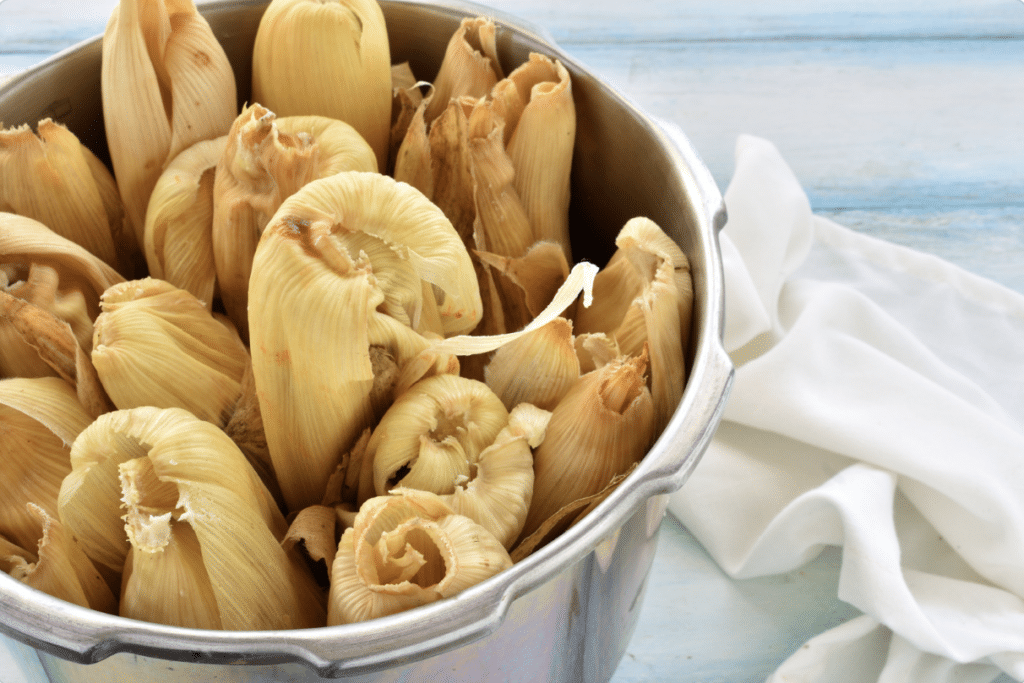Tamales are a traditional Mexican dish that has its own national holiday. Explore the rich history, culinary tips, and festive traditions surrounding tamales, a beloved dish steeped in culture.
Get ready to unwrap the joy of tamales, a culinary gem steeped in tradition. These delicious parcels, encased in cornhusks, are packed with a variety of fillings, from hearty meats and cheeses to sweet surprises, making every bite a celebration of flavor. Tamales not only bring people together but also offer a taste of rich cultural heritage at gatherings and family tables.
Nothing says fiesta like a delicious tamale. Celebrated each year on March 23, National Tamale Day is the perfect time to enjoy this traditional treat with friends and family.
Mmm, Tamales
Tamales are a traditional Mexican dish made from masa (corn-based dough) filled with meat, cheese, vegetables, or even beans and wrapped in corn husks or banana leaves. They’re then steamed and served with a variety of sauces including the classic mole sauce made with chocolate or other sauces usually containing chilies.
This tasty treat has become increasingly popular throughout Central America and the United States due to its versatility, convenience, and amazing flavor. Whether you prefer your tamales mild or spicy, there’s something that will satisfy everybody’s palate.
The origins of the tamale can be traced back to the Aztecs, who traditionally ate tamales as part of celebrations. The custom was adopted by the rest of Mexico before crossing over to the United States in the 19th century. Since then, it has become a beloved part of our culture and an important staple during holidays such as Christmas and Easter.
Cooking Tips and Techniques for Perfect Tamales
Preparing and steaming tamales is an art that combines tradition with culinary skills. Here are essential tips and techniques to help you master the process and ensure your tamales turn out perfectly every time.
1. Preparing the Masa: Achieving the perfect masa texture is crucial for good tamales. Start with a high-quality masa harina, and mix it with warm water and fat (traditionally lard, but you can use butter or oil for a lighter version). The dough should be soft and spreadable but not sticky. If it’s too dry, add a bit more liquid; if too wet, add a little more masa harina.
2. Soaking the Husks: Before you start wrapping your tamales, soak the cornhusks in warm water for at least an hour to make them pliable. This prevents them from breaking when you roll and fold them around the masa and filling.
3. Filling and Wrapping: When adding the filling, be careful not to overstuff the tamale. A good rule of thumb is to use about two tablespoons of masa spread thinly across the wider end of the husk, leaving a border for folding. Add a spoonful of your chosen filling, then fold the sides of the husk over the masa before folding up the bottom. This will keep the filling securely inside.
4. Steaming the Tamales: Use a steamer basket to cook the tamales. Ensure they don’t touch the water, and steam them covered for about 90 minutes to two hours. A common pitfall is undercooking, which leaves the masa doughy. To avoid this, make sure the tamale separates easily from the husk once done.
5. Avoid Overcrowding: In the steamer, ensure the tamales are not packed too tightly, as they need space to expand. Stand them upright, and the open end up to help them hold their shape and cook evenly.
By following these tips and techniques, you’ll be well on your way to enjoying delicious, homemade tamales that are sure to impress.
About National Tamale Day
Richard Lambert, the proprietor of Tamales-To-Go in Santa Barbara, established National Tamales Day in 2015 to honor his signature dish and the affection the family has for tamales. They decided on March 23rd since Melba Toast was the only other food competition on this date. Though tamales are a common delicacy typically consumed on holidays, he wanted others to enjoy them all year round.

